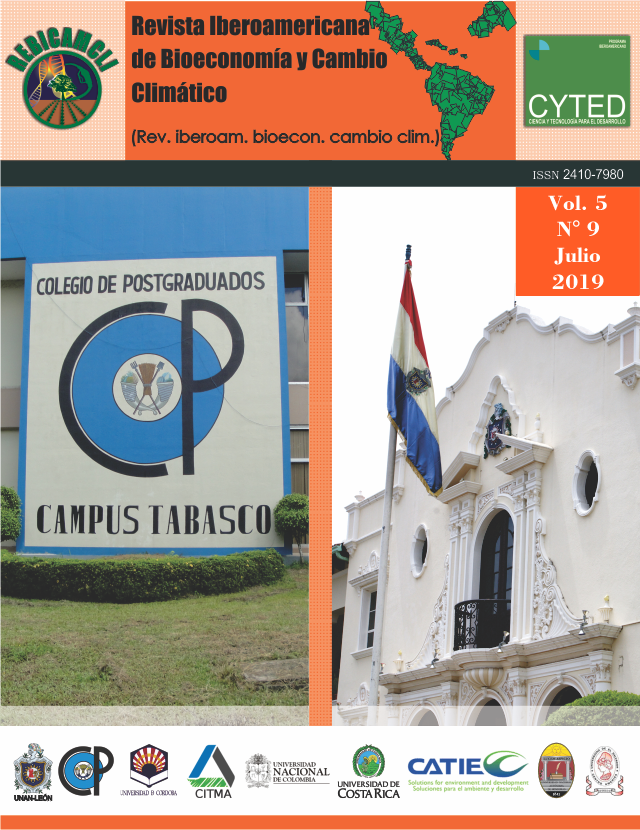Mulberry (Morussp) as an alternative in silvopastoral systems
DOI:
https://doi.org/10.5377/ribcc.v5i9.7951Keywords:
Morus sp, Nutritionalvalue, ForageAbstract
The present study focused on determining the agronomic characteristics of mulberry production as an alternative in bovine feeding. Where was determined the description of the plant, utilization, nutritional composition, agronomic management and yield of the crop. A review of bibliography specialists in the area under study was used. Finding that this species is a forage shrub native to Asia, it contains 15-28% crude protein and 75 to 90% in vitro digestibility of dry matter, it is used as food for the silkworm and fodder for ruminants; the yield of forage reaches up to 40 ton / ha per year in fresh matter with 25% dry matter. The implementation of mulberry in bovine feed is economical, profitable and sustainable, because it is not necessary for the producer to supply food with concentrate since this raises the costs of production in meat or milk.
Downloads
Downloads
Published
How to Cite
Issue
Section
License
Copyright © 2022 Rev. iberoam. bioecon. climate change Graduate School and UNAN-León, School of Agricultural and Veterinary Sciences / Department of Agroecology / Center for Research in Bioeconomy and Climate Change (CIByCC).







